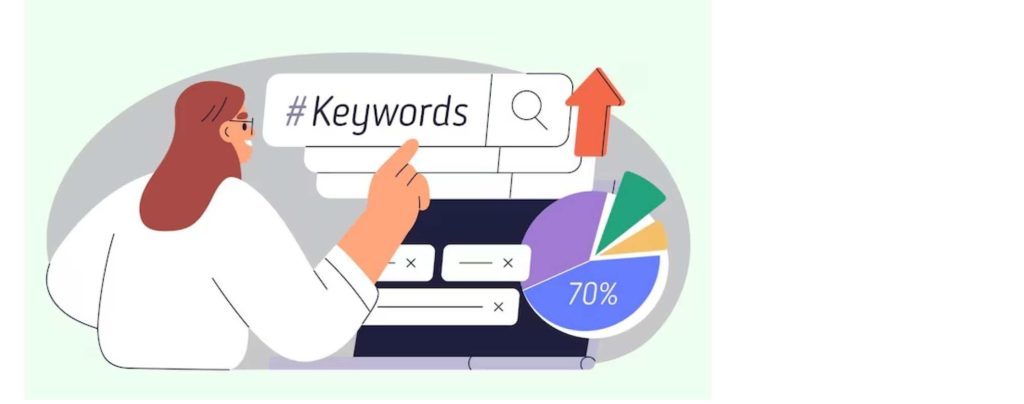Introduction
AdWords Competitor Analysis is one of the most useful and yet neglected aspects of contemporary marketing. The internet is an incredibly competitive place, and businesses are constantly fighting to surpass one another in order to be at the top of search results and get more clicks. Knowing what your competitors are doing and doing it better can give you an edge.
But competitor research isn’t something that should just live within your PPC team. Too often, a Google competitive PPC insight is done to manipulate the bid strategies or ad copy. And while that’s great, the true value is when these learnings are shared across your wider digital strategy.
Fully integrated, AdWords Competitor Analysis can power everything from SEO prioritization and content marketing to product positioning, UX design, email messaging, and even overarching brand strategy. It exposes gaps you can exploit, trends you can ride, and pitfalls you can sidestep, providing your marketing team, top to bottom, with better data for making decisions.
We’ll cover how to integrate competitive PPC insights into your entire marketing ecosystem in flowing harmony, so that every single team gets a piece of that competitive intelligence, and your brand remains on the cutting edge.
What Is AdWords Competitor Analysis?
AdWords Competitor Analysis is the disciplined and organized assessment of the paid search activity of your rivals, not just monitoring what they’re doing, but discovering actionable insights you can use to beat them.
Competition is tough in the world of Google Ads (used to be called AdWords). Businesses are in a bidding war with one another for the same high-intent keywords all the time, reaching the same audiences with, in many cases, similar offers. Knowing exactly how your competitors are working the paid search channel could offer you a competitive advantage, helping you to refine your search approach, improve ROI, and gobble up more market share.

Fundamentally, Google’s competitive PPC insights will provide information like:
- Who are your high-quality paid search competitors (different from your organic competitors)?
- Which keywords are they targeting and how fiercely?
- Are they running branded campaigns, and how are they structured (brand, generic, competitor bidding?
- What does the ad copy say? What kinds of deals or offers are they promoting?
- What ad extensions are they employing (sitelinks, callouts, reviews, promotions)?
- How much do they probably spend on Google Ads?
- What are their estimated ad CTR and impression share?
- What are they sending traffic to in terms of landing pages, and what is the optimization level of those landing pages for conversion?
Equipped with this intel, your team will be able to:
- Find keyword opportunities (and gaps where you can be more competitive)
- Compare your ad performance to competitors (CTR, quality score, impression share)
- Spot trends in messaging, offers, and creative that you can emulate or counter
- Identify twists in competitor strategies, like slow landing pages or uninspired ad copy that offer the opportunity to exploit.
- Improve your own campaign structure, targeting, and bidding strategies
- Budget based on where the competition is strongest and/ or weakest
AdWords Competitor Analysis keeps you moving when things are moving fast in the paid search landscape. Your rivals are running new keywords, refreshing approaches, and killing offers. Without consistent review, it’s simple to get into a pattern, and more challenging to see new trends in user behavior or changes in the competitive landscape.
Marketers use a combination of tools to collect this information:

- Google Auction Insights: This is incorporated into Google Ads and offers information on who else is bidding against you in an auction, as well as impression share, overlap rate, position above rate, among other data.
- SEMrush: provides an in-depth look at competitor paid search strategies, estimations of spend, ad copy history, and keyword coverage.
- SpyFu: Skews heavily on keyword overlap and historical ad creatives.
- iSpionage: Competitor research tools on landing pages, funnel analysis, and competitive keyword tracking.
So in summary, competitive PPC insights provide you a strategic view of your competitive world, a view which will not only improve your strategy but also inform the rest of your digital strategy, as we’ll delve into in the next sections.
Why AdWords Competitor Analysis Matters More than Just PPC?
AdWords Competitor Analysis is often considered a PPC optimization strategy by most marketers. They leverage it to optimize bids, improve ad copy, or discover new keyword opportunities in Google Ads. Although these are great results, successful competitor analysis is even more powerful.
When you integrate it and apply it properly, competitive PPC insights give you insights that can filter your overall digital strategy, even reach into how you think about UX Additionally, it reveals SEO, content marketing, product positioning, and even your brand’s media mix.
Here’s why this matters:
1. Competitor Ad Messaging Exposes Positioning Tactics

Paid search is a peek into how competitors are positioning themselves in the market. Because they pay for every click, brands typically center their ad copy around the value propositions and differentiators they think will convert.
Competitive and ad patterns (i.e., how the competition is writing their ads headlines, descriptions, and extensions – this tells you a lot of information on:
- Which benefits competitors stress the most (price, quality, speed, innovation, customer service, etc)
- How they present offers (discounts, guarantees, free trials)
- The emotional hot buttons they push (trust, exclusivity, urgency, etc.)
You can apply these learnings to your brand messaging across all channels: organic search, social media, video, email, and offline advertising.
2. Keyword Targeting Shows Buyer Intent Signals
What your competitors are bidding on (for) the keywords they do so with, using Google AdWords Competitor Analysis, is a guide to buyer intent in your niche.
When several competitors are spending a lot on particular keyword groups, especially high-cost, high-conversion keywords, it shows strong intent and commercial value.

Here are the lessons that can help you make your SEO and content marketing decisions:
- What keywords should you be working into if you are trying to boost organic traffic?
- Where can you produce supportive content to drive leads through the funnel?
- Is there an opening in long-tail keywords that competitors are missing?
When your SEO and content strategies are informed by paid search, however, you have the opportunity to establish a much more integrated and impactful digital footprint.
3. Landing Page Strategies that Show UX and CRO Best Practices
The advertisers’ landing pages — linked to from paid search ads — tend to be the best-optimized pages for them.

Dissecting them as part of competitive PPC insights reveals best practices on:
- User experience (UX) design
- Conversion rate optimization (CRO)
- Content structure and ranking
- Trust indicators (reviews, testimonials, security badges)
- Visual hierarchy and CTAs
You can use these lessons learned not only across the full spectrum of your site’s content and marketing funnel, paid campaigns, perhaps, but also organic traffic, social campaigns, and email-driven visits.
4. Media Planning Helps Guide Competitive Spend Insights

And by seeing the performing and non-performing keywords, you can get into stealth mode to identify where competition might be shifting ad spend up or down, a leading indicator for market dynamics:
- If CPCs spike in certain sectors, it could signal new entrants or a trend on the rise.
- If a major competitor pulls back spend, it could present an opportunity to capture market share.
When you fold that intelligence back into your wider media planning, you can more strategically allocate your budget across channels, putting you in a stronger position to be agile in a changing environment.
In sum, competitive PPC insights are more than a PPC trick, it’s a strategic weapon in shaping and fortifying your whole digital marketing body.
How to Incorporate AdWords Competitor Analysis in Your Overall Digital Strategy?
AdWords Competitor Analysis is most useful when you can act on the insight it provides marketers as they make decisions about the entirety of their marketing ecosystem, and not just for PPC campaigns. Top CMOs take it as input to digital strategy, aligning messaging, targeting, budget, and user experience in every channel.
Here is how to use Google paid search competitor research as part of your overall strategy:
1. Fuel SEO and Content Strategy With Feeds
Keywords your competition is bidding on in PPC usually represent high-converting buyer intent, which is obviously useful for SEO and content planning.

How you can benefit from AdWords Competitor Analysis:
- Use SEO content on high-intent terms.
- Spot long-tail keywords your competitors are overlooking.
- Line up blog topics, landing pages and pillar content with what is generating value in paid search.
- Identify trends that are just beginning to gain popularity, on the basis of new keywords that competitors start targeting.
This will help make sure your organic and paid strategies feed one another and that your content is supported by actual demand signals from the market.
2. Maximize UX and Conversion Funnels From Any Channel
And competitor landing pages, found while doing Google AdWords Competitive Analysis, are no exception: they constantly reveal the newest ideas and directions for:
- Design
- Content hierarchy
- Offers and incentives
- Trust elements
- Form UX and checkout flows

Use these learnings to:
- Test your own site and landing pages.
- Pinpoint where gaps or friction exist in your conversion funnels.
- Use battle-tested UX patterns for your SEO pages, your email campaigns, even your organic social content!
“Pulling in those CRO insights from our AdWords Competitor Analysis is a game-changer to get some lift in your conversion rates across the board with your digital presence, not only paid traffic.
3. Filter and Polish Brand/Positioning Messages
The ad copy in paid search is a treasure trove for understanding how others talk about their products/services.

AdWords Competitor Analysis helps you gain insight into:
- What features/benefits does your competition concentrate on the most?
- How they present pricing or promotions.
- The emotional triggers they pull (trust, quality, value, exclusivity, etc.) Feed these insights into:
- Your brand’s messaging guidelines.
- Website copy.
- Video scripts.
- Email marketing.
- Social campaigns.
Steady, distinctive positioning, rooted in competitive intelligence, is what makes your brand jump out in all those channels.
4. Direct Budget Allocation across Paid Media Channels

Trends in Google paid search competitor research (like fluctuating CPCs or a changing impression share) can be an excellent resource for media planning:
- If the competition for a group of keywords is getting stiff, consider reallocating a little bit of budget to paid social, native ads, or programmatic.
- When competitors are pulling back in areas, take the opportunity to secure cost-effective visibility.
By folding competitive spend trends into your media strategy, you stay nimble and put budget where it scores the highest returns.
5. Aligning Sales, Product, and Marketing Teams

The knowledge you get out of AdWords Competitor Analysis can be used for more than marketing:
- Share results with the sales teams to improve competitive talk tracks.
- Make trends visible or feature positioning visible to product teams.
- Coordinate cross-functional go-to-market strategies along competitive realities.
As paid search competitor research is then an input into your full digital strategy, you function as a company with clearer market intelligence.
Now, lets get into how often you should perform AdWords Competitor Analysis to Kick ass against your competition!
How frequently should you do AdWords Competitor Analysis?
Paid search competitor research isn’t just a one-time thing, it’s a recurring strategic practice. The competitive environment of Google Ads changes frequently, due to the emergence of new entrants, changes on the bidding front, and changes in user behavior.
To keep ahead of them, you need to put the Google AdWords Competitor Analysis into your normal marketing workflow, having layers of review, all at different cadences:

1. Monthly: Light Monitoring
Your PPC team or digital marketing manager should do these things at least once per month:
- Analyze Auction Insights in Google Ads for changes in impression share, overlap rates, and position above rates.
- Keep an eye on your competition’s ad copy for new offers or message trends.
- Monitor average CPC fluctuations for your top keyword groups.
Framed with a light touch, this kind of monitoring can help spotlight the first signs of competitive shifts. Quarterly: Deep-Dive Reviews
2. Perform an AdWords Competitor Analysis quarterly as follows:
- Look at shifts in keyword targeting.
- Check out landing pages for UX or CRO patterns.
- Benchmark your performance against key competitors.
- Pinpoint breaks or new opportunities to exploit.
Quarterly reviews will keep your broader digital strategy in line with competitive realities.
3. Annually: Strategic Planning
Add well-rounded Google paid search competitor research to your Annual Strategic Planning Cycle, at least annually:
- Reassess positioning.
- Coordinate messaging across channels.
- Offer insights on cross-functional strategies (SEO, content, product marketing).
In conclusion, continuous competitor analysis enables you to keep ahead of the game, instead of playing catch-up, in a fast-moving paid search environment.
Conclusion
AdWords Competitor Analysis is nothing less than an indispensable tool for your paid search team. When incorporated as a part of your larger digital strategy, it’s an immensely potent pipeline for market intelligence — sharpening messaging, prioritizing SEO, maximizing UX, media spend, and lining up cross-functional effort.
In the cut-throat digital world, companies that rely on instant insights are outpacing those that are operating without clarity or direction. By performing consistent Google paid search competitor research, you’ll have a straightforward understanding of your position in the market and where it is that you can differentiate and dominate.
These ideas, most importantly, should cross-pollinate throughout your marketing organization. When SEO, content, paid media, product marketing, and sales all execute from the same competitive playbook, your brand’s capacity to adapt and outflank competitors grows exponentially.
Embed these inside your content, and when done right, they will help you down your competition, which is always worth it. If your site is poorly optimized with low-quality content, it could harm your rankings. Teams such as Tasks Expert can assist you in putting in place a repeatable process, so that your digital marketing can keep being competitive and ROI-focused.
About Us
Tasks Expert offers top-tier virtual assistant services from highly skilled professionals based in India. Our VAs handle a wide range of tasks, from part time personal assistant to specialized services like remote it support services, professional bookkeeping service etc. Furthermore, it helps businesses worldwide streamline operations and boost productivity.
Ready to elevate your business? Book a Call and let Tasks Expert take care of the rest.










